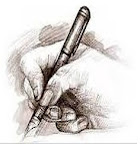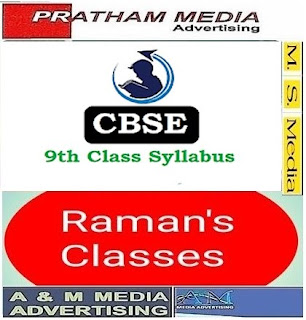--------
Dav Public Schools.
PG Campus.Biharsharif.
4th Periodic Exam. Sample Paper. Class IX.Session (24 -25 )
Full Marks : 25. Timing : 2 Periods.
4th Periodic Test : 2024 -25
Time : 2 Periods.
Class: IX.
Subject: S.Sc.
Time : 2 Periods.
-------
4th PT. History : 7: Marks.
-----------
Q.1.When did the Gujjar herd their cattle ? (1) Marks.
a. Jammu Kashmir
b. Sikkim
c. Bihar
d. Uttar Pradesh.
Answer : a. Jammu Kashmir.
Q.2. The Pastoralist community Dhangar was of which region ? (1)
a. Bihar.
b. Madhya Pradesh.
c. Maharashtra.
d. Jharkhand.
Answer : Maharashtra.
Q.3.Which are the two important features of Forest Acts ? (2) Marks.
Answer : Various forest acts were enacted by the colonial rule
a. Some forests produced commercially valuable timber like deodar or sal
b. No pastoralist was allowed to access these forests.
c. Forests were classified as ‘ Protected’ in some customary grazing rights were granted but their movements were restricted.
Q.4.Why is the Seasonal Movement important for the pastoralists ? (3) Marks.
Answer :The Seasonal Movement is important for the pastoralists ?
(a) They spent their winter in the low hills of the Shivalik range, grazing their flock in the scrub forests.
(b) By April, they moved north and spent the summer in Lahaul and Spiti and high altitude based area.
(c) When the snow melted and the high passes were clear, many of them moved to higher mountain meadows.
(d) By September, they began their return movement and descended with their flock to their winter grazing ground, the Shivalik hills.
------
4th. PT Civics : 6 Marks
-----------
Q.1.When was NHRC set up by laws? (1)
a. 1991
b. 1992
c. 1993
d. 1994
Answer : c.1993.
Q.2.When was the attack done over New York? (1) Marks.
a. 10 September 2001
b. 11 September 2001
c. 12 September 2001
d. 13 September 2001
Answer : b. 11 September 2001
Q.3.How can we secure these Fundamental Rights? (2) Marks.
Answer : a.To secure Fundamental Rights, citizens can educate themselves about their rights, actively speak out against violations, and utilize the
" Right to Constitutional Remedies" by approaching the courts if their fundamental rights are breached, allowing them to seek legal redress under Article 32 of the Indian Constitution; this ensures that the judiciary can intervene and protect these rights.
b. Speak up and protest.
Q.4.What are the 6 Fundamental Rights ? (2) Marks.
Answer : a. Right to Freedom
b. Right to Equality
c. Right to Constitutional Remedies
d. Right against Exploitation.
e. Right to Freedom of Religion
f. Cultural and Educational Rights.
-------
4th.PT. Geography : 6 Marks.
-----------
Q.1.Which state has the highest density of population? (1)
(a) Rajasthan
(b) Bihar
(c) West Bengal
(d) Haryana
Answer : Bihar.
Q.2.The wind blowing in the northern plains in summer is known as: (1)
(a) Kal Baisakhi
(b) Loo
(c) Trade Winds
(d) None of the above.
Answer : Loo
Q.3.What are the factors controlling the climate of India? (2)
Answer : The climate of India is controlled by several factors, including:
a. Latitude : The distance from the equator determines the climate of a region. Southern India is warmer because it is closer to the equator.
b. Altitude The temperature decreases with an increase in altitude. The Himalayas and other high regions of India have very low temperatures.
C. Distance from the Sea : The climate of a region is affected by how far it is from the sea. Coastal areas like Mumbai and Chennai have moderate temperatures, while inland areas like Punjab and Rajasthan have extreme temperatures.
d. Pressure Wind system : The direction and velocity of winds, and the pressure conditions in different regions, affect the climate. For example, in winter, the northern region near the Himalayas has high pressure, so winds blow south.
e.Ocean currents : Warm ocean currents raise the temperature of the coast, while cold ocean currents lower the temperature.
f. Western Cyclonic Disturbances
Q.4.Discuss the major components of population growth. (2)
a. Birth Rate : Also known as natality, this is the number of live births per thousand people in a year. A major component of population growth
b. Death Rate : Also known as mortality, this is the number of deaths per thousand people can be affected by advances in public health measures
c. Migration : The difference between the number of people moving into an area and the number of people moving out can impact the population's number, distribution, and composition
Internal Migration External Migration
d. Natural increase : The difference between live births and deaths
Net migration
e. Infant mortality rate
The number of infant deaths under one year of age per 1,000 live births in a year. An indicator of a population's healthcare and well-being
------
4th. PT. Economics : 6. Marks
-----------
Q.1.What is the main function of FCI ? (1)
(a) To purchase Wheat and rice from the farmers.
(b) To declare MSP
(c) To provide cash crop from the farmers.
(d) To provide seeds and other inputs to farmers.
Answer : (a) To purchase Wheat and rice from the farmers.
Q.2.A high incidence of malnutrition prevails among (1)
(a) Men.
(b) Women
(c) Children.
(d) None of the above
Answer : (c) Children.
Q.3.What is food security? Explain the major dimensions of food security? (2) Marks
Factors that can affect food security include:
Answer : Food Security has the following dimensions.
a. Availability of food
b. Accessibility
c. Affordability.
Q.4.Which are the people more prone to food insecurity? Explain. (2)
Answer :a.Land less : People who are poor, landless, or have low land productivity are more likely to experience food insecurity.
b.Natural Disasters : People who are affected by natural disasters, such as droughts or floods, are also more likely to experience food insecurity.
c.Depressed People Poverty : People who are SC,STs, and some sections of the OBC, lower castes among them who have either poor landbase or very low land productivity are prone to food insecurity.





























.jpg)












WOW 👌 GREAT EFFORT ,ALL Q/A AND MAPS, PARAGRAPHS EVERYTHING IS EASILY ACCESSIBLE
ReplyDeleteRAMEN CHAKRABORTY